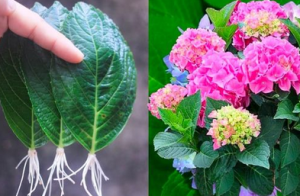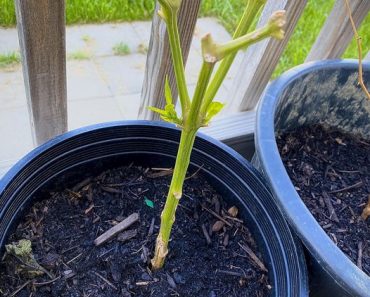
🌸 How to Grow Hydrangea Trees and Make Them Bloom More 🌿
Hydrangeas are a gardener’s delight! With their rapid growth and vibrant blooms, they add a touch of beauty to any garden. Here’s a comprehensive guide to help you grow your hydrangeas into stunning trees:
Introduction:
Welcome to our serene garden corner, where the beauty of hydrangeas takes center stage. Growing hydrangea trees is not only rewarding but also brings a sense of calm and elegance to your garden. In this guide, we’ll delve into the specifics of nurturing these gorgeous plants, from selecting the right variety to ensuring they bloom profusely. Let’s transform your garden into a blooming paradise!
Ingredients Overview:
- Hydrangea Varieties:
- Oakleaf Hydrangea: Known for its large, oak-shaped leaves and stunning white blooms.
- PeeGee Hydrangea: A versatile variety with cone-shaped flower clusters that can range from white to pink.
- Bigleaf Hydrangea: Popular for its large, colorful blooms that change color based on soil pH.
- Soil: Well-draining soil enriched with organic matter.
- Mulch: Organic mulch to retain moisture and regulate soil temperature.
- Fertilizer: Balanced fertilizer to support growth and blooming.
Step-by-Step Instructions:
Selecting the Right Variety:
Choosing the right hydrangea variety is crucial. Consider your local climate and personal preferences. Oakleaf, PeeGee, and Bigleaf hydrangeas are excellent choices, each offering unique beauty and resilience.
Planting Location:
Opt for a spot with partial shade. Hydrangeas thrive with morning sun and filtered afternoon shade, protecting them from harsh midday sunlight. This balance ensures healthy growth and vibrant blooms.
Soil Preparation:
- Test Soil: Check your soil’s pH and drainage. Hydrangeas prefer slightly acidic to neutral soil.
- Amend Soil: Incorporate organic matter like compost or well-rotted manure to enhance moisture retention and nutrient content.
Planting:
- Digging the Hole: Dig a hole twice the width of the root ball and the same depth.
- Placing the Plant: Gently place the hydrangea in the hole, ensuring the root ball is level with the soil surface.
- Backfilling: Fill the hole with soil, pressing gently to eliminate air pockets.
- Watering: Water thoroughly to settle the soil around the roots.
- Mulching: Add a layer of organic mulch around the base to retain moisture and regulate soil temperature.
How to Take Care of Hydrangea Trees 🌱
Light:
Provide partial shade to avoid scorched leaves and reduced flower production. Morning sun with afternoon shade is ideal.
Soil:
Ensure rich, well-draining soil with a slightly acidic to neutral pH. This creates an optimal environment for nutrient uptake and growth.
Water:
Maintain slightly damp soil. Hydrangeas need consistent moisture but avoid overwatering to prevent root rot.
Temperature and Humidity:
Moderate temperatures and adequate humidity support healthy growth. Protect your plants from extreme heat and cold.
Fertilizer:
Feed your hydrangeas with a balanced fertilizer in early spring before new growth begins. This boosts their energy for the growing season.
How to Get Hydrangea Trees to Bloom 🌺
Pruning:
Prune your hydrangeas to remove dead or weak wood. This encourages new growth and more abundant blooms. Pruning should be done after flowering to avoid cutting off next year’s buds.
Adjusting Soil pH:
Adjust the soil pH to influence flower color. For blue flowers, maintain acidic soil. For pink flowers, aim for a more alkaline soil. Use soil amendments as needed.
Mulching:
Apply organic mulch to regulate soil temperature and retain moisture. This also adds nutrients to the soil as it breaks down.
Watering:
Ensure consistent moisture, especially during dry periods. Deep watering promotes strong root development and vibrant blooms.
Valuable Tips for Seamless Gardening
- Consistency is Key: Regular care and attention to your hydrangeas will yield the best results.
- Observe and Adapt: Watch your plants and adjust care routines based on their responses and changing weather conditions.
- Seasonal Care: Tailor your care techniques to each season, ensuring protection in winter and robust growth in spring and summer.
Frequently Asked Questions (FAQs)
Q: When is the best time to plant hydrangea trees? A: The best time to plant hydrangeas is in the spring or fall when temperatures are moderate, allowing the plants to establish roots before extreme weather conditions.
Q: How often should I water my hydrangea trees? A: Watering needs depend on your climate and soil type, but generally, hydrangeas need about 1 inch of water per week. Increase watering during dry spells and reduce during wet periods.
Q: Can I change the color of my hydrangea flowers? A: Yes, you can change the color of Bigleaf hydrangea flowers by altering the soil pH. For blue flowers, keep the soil acidic (pH below 6). For pink flowers, make the soil more alkaline (pH above 7).
Q: How do I protect my hydrangeas in winter? A: In colder climates, mulch heavily around the base of the plant and consider covering with burlap to protect from frost and freezing temperatures.
Q: How do I know if my hydrangea needs pruning? A: Prune if you see dead or damaged wood, or if the plant is becoming too large or unruly. Pruning after the bloom period helps maintain shape and encourages healthy new growth.
Grow your hydrangea trees with care and watch them bloom into stunning displays of beauty! 🌼 Embrace the journey of gardening and let the calming essence of nurturing plants fill your garden with joy and tranquility.

